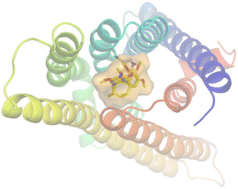Inhibitors of human bitter taste receptors from the five-flavour berry, Schisandra chinensis†
Abstract
The human bitter taste 2 receptor member 16 (TAS2R16) is one of 25 class A G-protein-coupled receptors (GPCRs) and responds to a variety of molecules responsible for the bitter taste sensation perceived in humans. TAS2R16 can be activated by β-glucopyranosides, and its activation can be inhibited by probenecid, a synthetic drug compound used to treat gout. In this study we describe naturally derived compounds which can inhibit the activation of TAS2R16 by salicin in vitro. These compounds belong to the lignan class derived from the fruit of Schisandra chinensis, which is commonly known as the five-flavour berry. We further tested other analogs with this lignan scaffold, found their differential inhibitory activities towards TAS2R16 in vitro, and sought to rationalize the activity using molecular docking of these lignans on a computationally modelled structure of TAS2R16. Selected lignans with inhibitory activity against other TAS2Rs reveal sub-millimolar inhibitory activity towards TAS2R10, TAS2R14, and TAS2R43 in cell-based assays. These compounds with demonstrated in vitro inhibition of bitter taste receptors may serve as tool compounds to investigate the molecular mechanisms of hTAS2Rs biology in gustatory and non-gustatory tissues.



 Please wait while we load your content...
Please wait while we load your content...